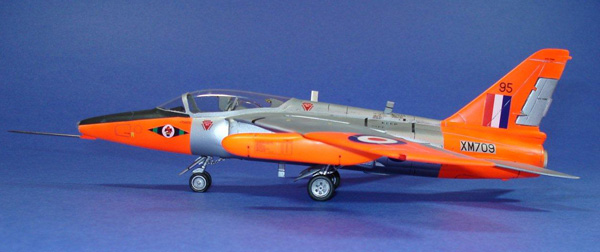Read the summary and view the gallery of images…
Background
The Folland (later Hawker Siddeley) Gnat was conceived by W.E.W. “Teddy” Petter, who was also responsible for the design of the Canberra and Lightning while working for English Electric. Petter had grown suspicious of the trend towards bigger and more expensive combat aircraft, and he felt that a small, simple fighter would offer the advantages of low purchase and operational costs. Unable to pursue his vision at English Electric, Petter left English Electric and joined Folland where he oversaw the creation of a “proof of concept” lightweight fighter designated the Folland Fo-139 Midge. The Midge first flew in 1954 drawing great praise from those that flew it. Following the crash of the Midge in 1955, Folland proceeded with the development of the Gnat prototype as a private venture using company funds. The RAF evaluation of the Gnat did not lead to a production order from the U.K. for the lightweight fighter although orders were forthcoming from Yugoslavia (2), Finland (13) and a licensing agreement with HAL of India which resulted in 45 Gnats being built for India.
Petter proposed a tandem seat trainer variant to the RAF which was accepted and a preproduction contract for 14 Gnat T.1 trainers was signed in 1958. The first flight of the T.1 occurred in August 1959 and following a successful evaluation the RAF placed an order for an additional 91 aircraft. These were built between 1962 and 1965.
The Gnat T.1 served the RAF well in its advanced trainer role and was also used by the Yellowjacks and Red Arrows display teams. It was retired from service in 1979 when the BAe Hawk replaced it in the advanced training role.
References used
http://www.thunder-and-lightnings.co.uk/gnat/index.html
http://www.vectorsite.net/avgnat.html
